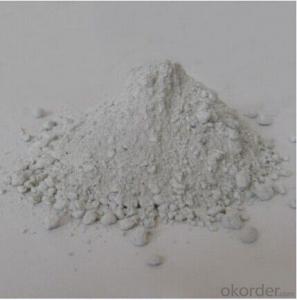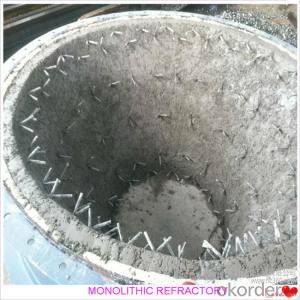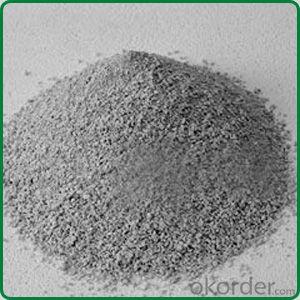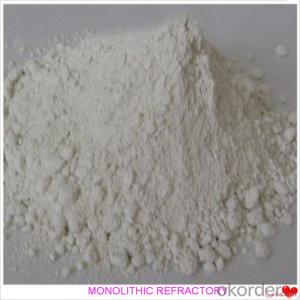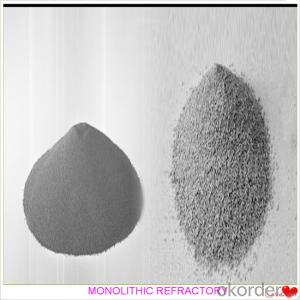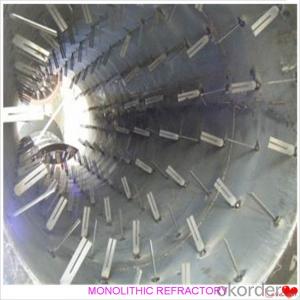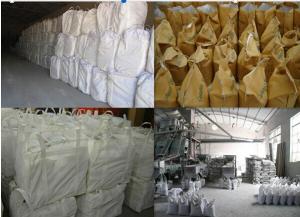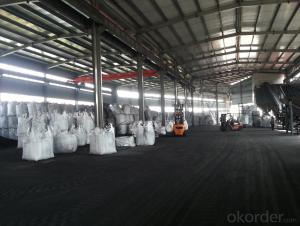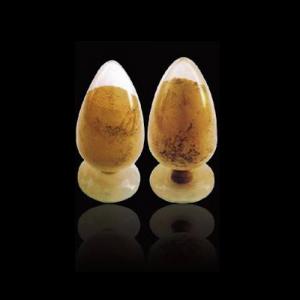Monolithic Refractories for Iron and Steel Industry - Castable Refractory for Cement Kiln and Boiler
- Loading Port:
- China Main Port
- Payment Terms:
- TT OR LC
- Min Order Qty:
- -
- Supply Capability:
- -
OKorder Service Pledge
OKorder Financial Service
You Might Also Like
Benefits:
1) Good performance to thermal stability, slag and abrasion resistance.
2) Good fluidity and convenient to install and maintain
3) Less installation and drying/sintering time
4) Efficiently reduced the production stoppages & downtimes
5) Labor and cost saving by prolonging campaign length.
| Refractory Castable for cement kiln | | | | |
| Items | HGJ-1 | HAJ-3 | HAM-2 | HAL-2 |
| Main Contents | Al2O3 | Al2O3 | MgO-Al2O3 | Al2O3-SiO2 |
| Characteristics | High strength anti-abrasion steel fiber castables | Chemical-bonding refractory castables | Low cement magnesium-aluminum castables | high purity bauxite low cement |
| Refractoriness | 1950℃ | 2150℃ | 2150℃ | 1700℃ |
| Density | 2.95g/cm3 | 2.89g/cm3 | 2.92g/cm3 | 2.55g/cm3 |
| Compressive Strength | 110℃×2h68.5MPa; | 110℃×2h59.2MPa; | 110℃×2h40.8MPa; | 110℃×2h52MPa |
| | 1500℃×3h 96.8 MPa | 1500℃×3h106.1MPa | 1500℃×3h102.5MPa | 1500 ℃×3h 75 MPa |
| Permanent Linear Changing Rate | 1500℃×3h+0.21% | 1500℃×3h+0.29% | 1500℃×3h+0.32% | 1500℃×3h±0.5% |
| Installation mode | casting | casting | casting | casting |
| Additive required | 5-10%water | 5-10%water | 5-10%water | 5-10%water |
| Application | Rotary kiln or industry furnace | Industry kiln | Ladle | differentpartsforcementkiln |
characteristics:
1. The dosage of cement is low, the content of calcium only accounts for 1/4-1/3 of common Refractory Castable
2. Wter consumption rate during the construction is almost 1/2 or 1/3 of the common Refractory Castable, so the Low Cement Refractory Castable has high density and low porosity.
3. High normal temperature cure property, intensity will be increased after medium temperature and high temperature. Three or five times more than common Refractory Castable.
4. Good volume stability under high temperature.
Application:
Material for metallurgy, petroleum, chemical and other industries kilns
Part of refining installation, like ladle cover
Insert for roof of the kiln
- Q: How are monolithic refractories inspected and tested for quality assurance?
- To ensure the reliability and performance of monolithic refractories, a series of rigorous processes are conducted for quality assurance. These inspections and tests play a crucial role in maintaining consistent quality standards and identifying any potential defects or weaknesses in the refractory material. The first step involves conducting visual inspections to check for visible defects such as cracks, spalling, or signs of poor manufacturing. This helps in identifying any obvious issues that may affect the refractory's performance. Following that, specialized equipment is used to measure physical properties such as density, porosity, and thermal conductivity. These measurements are then compared against predetermined standards to ensure that the refractory material meets the required specifications. Density and porosity are important indicators of the refractory's strength and resistance to heat and chemicals, while thermal conductivity determines its ability to efficiently transfer heat. Moreover, mechanical tests are performed to assess the refractory's strength and resistance to mechanical stress. This involves subjecting the material to compressive, tensile, and flexural forces to evaluate its structural integrity and durability. To ensure the refractory's suitability for high-temperature environments, thermal tests are conducted. These tests involve exposing the refractory to extreme temperatures and monitoring its behavior. Parameters such as thermal expansion and shrinkage, resistance to thermal shock, and thermal cycling are evaluated during these tests. Chemical analysis is another important aspect of quality assurance for monolithic refractories. Samples of the refractory material are analyzed to determine their chemical composition and assess their resistance to various corrosive environments. This analysis helps ensure that the refractory is suitable for the specific applications it will be used in. Finally, field tests may be conducted at actual operating sites to evaluate the refractory's performance under real-world conditions. These tests involve monitoring the refractory's behavior in terms of wear and tear, thermal insulation, and resistance to chemical attack. The results obtained from field tests are crucial in validating the refractory's performance and making any necessary adjustments to the manufacturing process. In conclusion, monolithic refractories undergo a comprehensive inspection and testing process that includes visual inspections, physical and mechanical tests, thermal analysis, chemical analysis, and field tests. This systematic approach guarantees that the refractories meet the required quality standards, providing reliability and durability in the demanding environments they are designed for.
- Q: How does the composition of monolithic refractories impact their performance?
- The composition of monolithic refractories plays a crucial role in determining their performance. Monolithic refractories are essentially unshaped refractory materials that are used to line furnaces, kilns, and other high-temperature equipment. They are preferred over traditional brick and mortar refractories due to their ease of installation and ability to conform to complex shapes. The composition of monolithic refractories includes various components such as aggregates, binders, and additives. The type and proportion of these constituents significantly influence the physical, mechanical, and thermal properties of the refractory material. Aggregates are the major component of monolithic refractories and provide the structural integrity. They can be made of various materials like alumina, silica, magnesia, and carbon. Each aggregate has its own unique properties that determine the refractory's resistance to heat, chemical attack, and mechanical stress. For example, alumina aggregates offer excellent resistance to high temperatures and chemical corrosion, while carbon-based aggregates are preferred for their high thermal conductivity. Binders are added to the mix to provide cohesion and improve the refractory's strength. Common binders include clay, calcium aluminate cement, and colloidal silica. The selection of binders depends on the desired strength, workability, and setting time of the refractory material. Additives are incorporated in the composition to enhance specific properties. They can improve the refractory's resistance to thermal shock, abrasion, or chemical attack. Additives like zirconium oxide, silicon carbide, and graphite are often used to enhance the performance of monolithic refractories in specific applications. The proper combination and proportion of these constituents are crucial for achieving the desired performance of monolithic refractories. The composition affects the refractory's thermal conductivity, thermal expansion, density, porosity, and chemical resistance. For instance, a higher alumina content would improve the refractory's resistance to high temperatures and chemical corrosion, while a higher silica content would enhance its insulating properties. In conclusion, the composition of monolithic refractories has a significant impact on their performance. The selection of aggregates, binders, and additives must be carefully considered to achieve the desired properties and ensure optimal performance in specific high-temperature applications.
- Q: How do monolithic refractories contribute to the overall efficiency of ladles and tundishes?
- Monolithic refractories play a crucial role in enhancing the overall efficiency of ladles and tundishes in several ways. Firstly, monolithic refractories are known for their excellent thermal insulation properties. By lining the ladles and tundishes with monolithic refractories, heat losses are minimized, resulting in reduced energy consumption and improved thermal efficiency. This insulation capability also helps in maintaining a consistent temperature within the ladles and tundishes, which is essential for the proper casting and solidification of molten metal. Moreover, monolithic refractories offer superior resistance to thermal shocks and chemical corrosion. Ladles and tundishes are subjected to extreme temperatures and harsh chemical environments due to the contact with molten metal and various fluxes or additives. The use of monolithic refractories ensures a longer service life for ladles and tundishes by preventing cracking, spalling, or erosion caused by these harsh conditions. This, in turn, reduces downtime for maintenance and replacement, leading to increased overall efficiency. Additionally, the flexibility and ease of installation of monolithic refractories contribute to the efficiency of ladles and tundishes. Unlike traditional brick lining, monolithic refractories can be easily formed and installed in various shapes and sizes, allowing for better customization and optimization of ladles and tundishes. This adaptability helps in improving the flow dynamics of molten metal, reducing turbulence, and enhancing the overall casting process efficiency. In summary, monolithic refractories enhance the overall efficiency of ladles and tundishes through their exceptional thermal insulation properties, resistance to thermal shocks and chemical corrosion, and flexibility in installation. By minimizing heat losses, extending service life, and optimizing the casting process, monolithic refractories contribute significantly to the overall efficiency and productivity of ladles and tundishes in the metal industry.
- Q: How are monolithic refractories used in the repair and maintenance of ladles and tundishes?
- Monolithic refractories are extensively used in the repair and maintenance of ladles and tundishes in the steel industry. These refractories are specially designed to withstand the extreme conditions of high temperatures, thermal shock, and chemical erosion that occur during the steelmaking process. When it comes to the repair of ladles, monolithic refractories are used to line the inner walls of the ladle. Ladles are subjected to intense heat and corrosive molten metal, and the refractory lining provides insulation and protection against these harsh conditions. The lining also helps to maintain the desired temperature of the molten metal, ensuring that it remains in a suitable state for processing. In the case of tundishes, monolithic refractories are used to line the bottom and sides of the tundish, as well as the nozzle and impact pad. Tundishes are responsible for distributing molten metal to multiple casting molds and are exposed to high temperatures and thermal shocks. The refractory lining helps to maintain the necessary temperature and prevent any leakage of molten metal. During the repair and maintenance process, monolithic refractories are applied as a dense, high-strength material that is easy to shape and install. They can be shaped into various forms such as bricks, castables, and gunning mixes, depending on the specific requirements of the ladle or tundish. These refractories are often applied using specialized techniques, such as gunning or casting, to ensure proper adhesion and longevity. In addition to their thermal and chemical resistance properties, monolithic refractories also offer excellent mechanical strength and resistance to abrasion. This is crucial in ladles and tundishes, as they are subjected to constant wear and tear from the movement of molten metal and the handling of refractory materials during repair and maintenance. Overall, monolithic refractories play a critical role in the repair and maintenance of ladles and tundishes in the steel industry. They provide the necessary insulation, protection, and durability required to withstand the demanding conditions of steelmaking.
- Q: What are the advantages of using plastic refractories in the iron and steel industry?
- There are several advantages of using plastic refractories in the iron and steel industry. Firstly, plastic refractories have excellent thermal shock resistance, which means they can withstand rapid changes in temperature without cracking or breaking. This is crucial in the iron and steel industry where the materials are exposed to extreme heat during the manufacturing process. Secondly, plastic refractories have good workability and can be easily shaped and molded to fit various complex shapes and sizes of furnaces, ladles, and other equipment used in the industry. This makes them highly versatile and adaptable to different production requirements. Additionally, plastic refractories have excellent resistance to chemical attacks from molten metals and slags. They can withstand the corrosive nature of these materials and maintain their structural integrity, ensuring longer service life and reducing maintenance costs. Lastly, plastic refractories have good bonding properties, allowing them to adhere well to existing refractory linings. This helps to extend the lifespan of the overall refractory system and reduce the need for frequent repairs or replacements. Overall, the advantages of using plastic refractories in the iron and steel industry include thermal shock resistance, workability, chemical resistance, and good bonding properties, making them a preferred choice for lining and repairing furnaces and other equipment in this industry.
- Q: What are the limitations of monolithic refractories in high-temperature applications?
- Monolithic refractories are known for their versatility and ease of installation, making them popular in a variety of high-temperature applications. However, they do have certain limitations that need to be considered. Firstly, monolithic refractories have a limited thermal shock resistance. Rapid temperature changes, such as during startup or shutdown procedures, can cause thermal stress, leading to cracking or spalling. This can be a significant concern in applications where the refractory is subjected to frequent temperature fluctuations. Secondly, monolithic refractories have relatively lower mechanical strength compared to traditional brick or block refractories. This can result in reduced resistance to mechanical stress, such as abrasion or impact, particularly in high-temperature environments. Therefore, they may not be suitable for applications with high mechanical loading or abrasive conditions. Another limitation of monolithic refractories is their susceptibility to chemical attack. Certain aggressive chemical environments can cause chemical reactions with the refractory material, leading to deterioration or corrosion. This can be a concern in applications involving acidic or alkaline substances, where special refractory materials may be required. Furthermore, monolithic refractories can have a higher susceptibility to spalling or erosion caused by thermal cycling. The repeated expansion and contraction of the refractory material due to temperature changes can lead to the formation of cracks or gaps, making them more prone to erosion from gases or liquids. This limitation should be carefully considered in applications where long-term durability is essential. Lastly, monolithic refractories can be challenging to repair or replace compared to brick or block refractories. Once installed, it can be difficult to remove and replace a monolithic lining, especially in complex shapes or confined spaces. This limitation can result in longer downtime or increased costs for maintenance or repairs. In summary, while monolithic refractories offer several advantages in high-temperature applications, they also have limitations in terms of thermal shock resistance, mechanical strength, chemical resistance, erosion, and repairability. These limitations should be carefully evaluated to ensure the suitability of monolithic refractories for specific application requirements.
- Q: How do monolithic refractories withstand chemical attack from molten metals and slag?
- Monolithic refractories withstand chemical attack from molten metals and slag due to their unique composition and properties. These refractories are made of a single, homogeneous material, which provides them with better resistance against chemical corrosion. Additionally, monolithic refractories are designed to have low porosity and high density, which limits the penetration of molten metals and slag into their structure. These materials also have high melting points, enabling them to withstand the extreme temperatures present in industrial processes. Overall, the combination of their composition, low porosity, high density, and high melting points makes monolithic refractories highly resistant to chemical attack from molten metals and slag.
- Q: What are the key properties of patching mixes used for monolithic refractory repairs?
- The key properties of patching mixes used for monolithic refractory repairs include: 1. High temperature resistance: Patching mixes for monolithic refractory repairs need to be able to withstand high temperatures without losing their structural integrity. They should be able to withstand temperatures in the range of 2000 to 3000 degrees Fahrenheit. 2. Chemical resistance: These patching mixes should be resistant to the chemical reactions that occur in the presence of molten metals, slag, or other corrosive materials. They should not deteriorate or react with these substances, ensuring the longevity of the repaired refractory. 3. Thermal shock resistance: Patching mixes must be able to withstand rapid changes in temperature without cracking or spalling. Refractory linings are often subjected to extreme thermal cycling, and the patching material should be able to handle these conditions without failure. 4. Adhesion: The patching mix should have excellent adhesion properties to ensure a strong bond with the existing refractory material. This is crucial to prevent any separation or detachment of the patching material, which could lead to further damage or failure. 5. Workability: The patching mix should have good workability, allowing for easy and efficient application. It should be easily moldable and able to fill cracks, gaps, or damaged areas effectively. 6. Setting and curing time: The patching mix should have a reasonable setting and curing time. It should be able to harden quickly to allow for minimal downtime during repairs, but also provide sufficient time for proper application and shaping. 7. Density and porosity: The patching material should have an appropriate density and porosity to ensure resistance against molten metal or slag penetration. A low porosity ensures that the repaired refractory maintains its thermal insulation properties. 8. Mechanical strength: The patching mix should exhibit adequate mechanical strength to withstand physical stresses, such as abrasion or impact, that may occur during operation. 9. Compatibility: It is important that the patching mix is compatible with the existing refractory material to ensure a seamless integration and prevent any potential chemical reactions or incompatibilities that could compromise the repair. By considering these key properties, patching mixes used for monolithic refractory repairs can effectively restore the integrity and performance of refractory linings, extending their lifespan and ensuring efficient and safe operation in high-temperature environments.
- Q: How do monolithic refractories perform in torpedo ladle applications?
- Due to their excellent performance and durability, monolithic refractories are commonly used in torpedo ladle applications. Torpedo ladles are utilized in the steelmaking process to transport and pour molten metal from the blast furnace to the steelmaking furnace. Also known as unshaped refractories, monolithic refractories are made from a single material and can be applied as a cohesive mass, making them highly versatile and easy to install in the torpedo ladle. In torpedo ladle applications, monolithic refractories offer numerous advantages. Firstly, they possess high heat resistance, enabling them to endure the extreme temperatures and thermal shocks experienced during the transfer and pouring of molten metal. This ensures that the refractories do not crack or fail under these harsh conditions. Additionally, monolithic refractories exhibit excellent corrosion resistance properties, which is imperative in torpedo ladles where the molten metal can be highly corrosive. They can withstand the aggressive chemical environment and prevent chemical reactions that could result in refractory deterioration. Moreover, monolithic refractories possess good thermal insulation properties, reducing heat loss from the molten metal and promoting energy efficiency. This helps to maintain the desired temperature of the metal, ensuring optimal steelmaking conditions. Furthermore, monolithic refractories offer strong mechanical strength and resistance to abrasion, making them highly suitable for torpedo ladle applications where the refractory lining is subjected to mechanical stress and wear. Overall, monolithic refractories perform exceptionally well in torpedo ladle applications due to their high heat resistance, corrosion resistance, thermal insulation properties, and mechanical strength. They can endure the extreme conditions and provide a reliable and long-lasting lining for torpedo ladles in the steelmaking industry.
- Q: What are the benefits of using monolithic refractories in the iron and steel industry?
- There are several benefits of using monolithic refractories in the iron and steel industry. Firstly, monolithic refractories offer excellent thermal shock resistance, allowing them to withstand extreme temperature changes without cracking or spalling. This is crucial in the iron and steel industry, where materials are subjected to high temperatures during processes like melting, casting, and heat treatment. Secondly, monolithic refractories have superior corrosion resistance, making them highly durable against the corrosive effects of molten metals and slag. This is particularly important in the iron and steel industry, where materials come into contact with aggressive molten iron, steel, and various chemical compounds. Additionally, monolithic refractories provide excellent mechanical strength and abrasion resistance. They have the ability to withstand mechanical stress, vibrations, and impacts typically encountered in the iron and steel industry. This ensures longer refractory lifespan, reduces downtime for repairs or replacements, and improves overall operational efficiency. Moreover, monolithic refractories offer ease of installation and repair. Unlike traditional refractory bricks that require complex and time-consuming masonry work, monolithic refractories can be installed quickly and easily using simple methods like casting, gunning, or spraying. This saves time and labor costs during initial installation and subsequent maintenance or repairs. Furthermore, monolithic refractories provide flexibility in design and application. They can be tailored to specific shapes and sizes, allowing for customized linings in different parts of the iron and steel manufacturing process. This versatility enhances the overall efficiency and effectiveness of refractory linings, optimizing the production output and ensuring consistent quality of the finished iron and steel products. In conclusion, the benefits of using monolithic refractories in the iron and steel industry are numerous. They offer exceptional thermal shock resistance, corrosion resistance, mechanical strength, and abrasion resistance. They are easy to install and repair, and their flexibility allows for customized designs. Overall, monolithic refractories contribute to improved productivity, reduced downtime, and enhanced product quality in the iron and steel industry.
Send your message to us
Monolithic Refractories for Iron and Steel Industry - Castable Refractory for Cement Kiln and Boiler
- Loading Port:
- China Main Port
- Payment Terms:
- TT OR LC
- Min Order Qty:
- -
- Supply Capability:
- -
OKorder Service Pledge
OKorder Financial Service
Similar products
Hot products
Hot Searches
Related keywords
